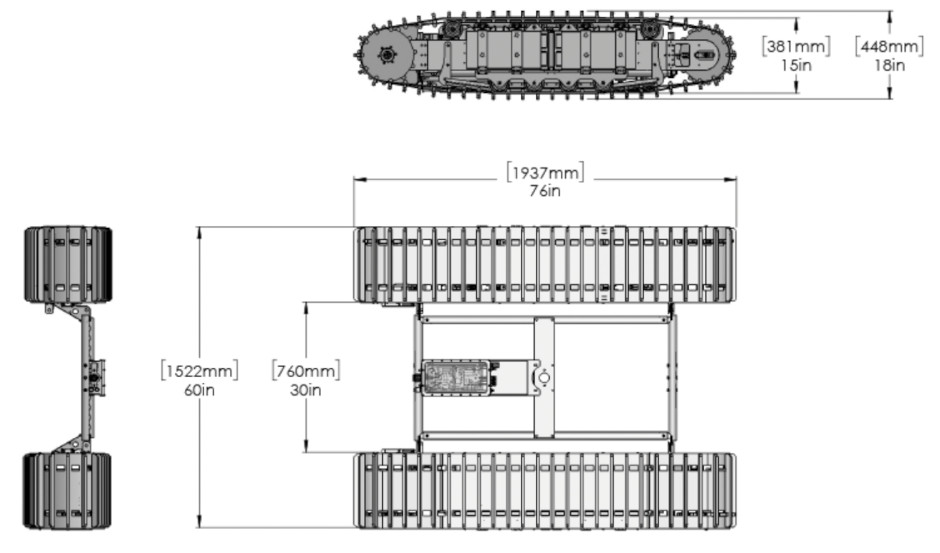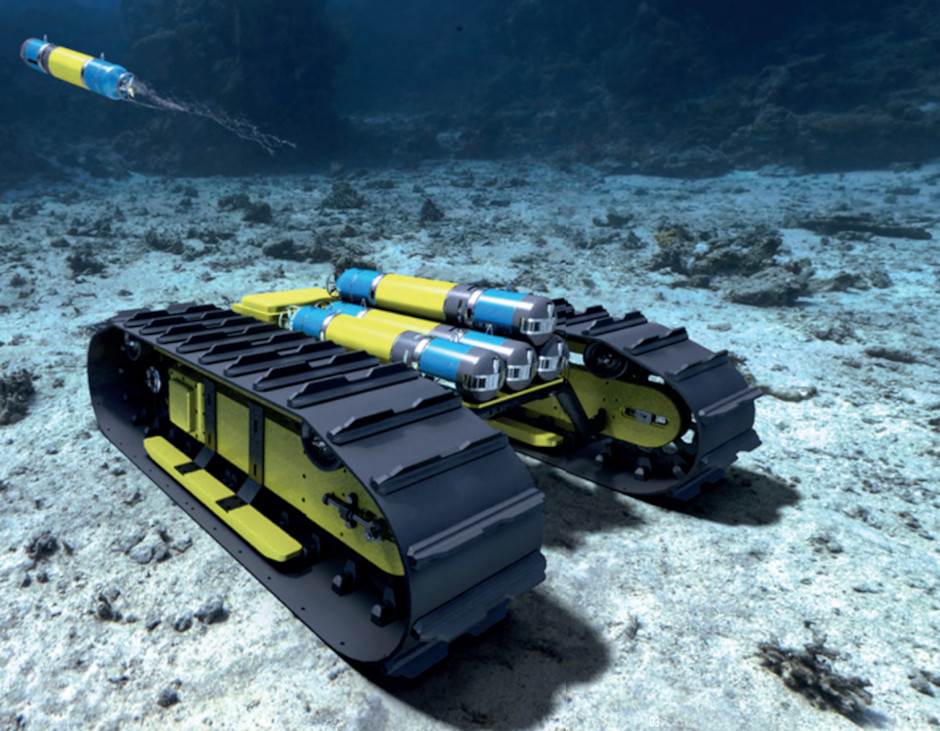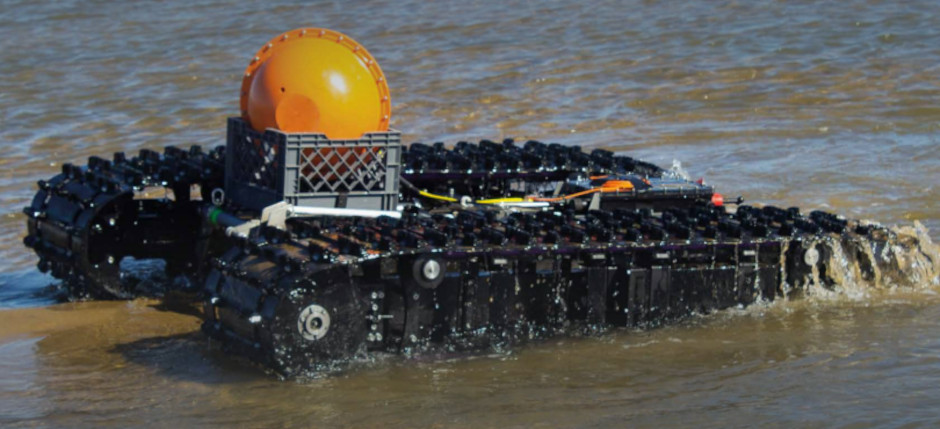New Tracked Underwater Drones
 The concept of submarine crawlers, which use tracks to navigate on the sea floor is not new. But it is still novel. What the Bayonet series of crawlers adds is modern levels of automation, reliability and flexibility.
The concept of submarine crawlers, which use tracks to navigate on the sea floor is not new. But it is still novel. What the Bayonet series of crawlers adds is modern levels of automation, reliability and flexibility.
There have been several crawler submarines in the past. During World War Two, the German Seeteufel midget submarine had tracks to allow it to enter and leave the water unassisted. Although it floated like a regular submarine once at sea. And during the Cold War the famous American spy submarine NR-1 had wheels to allow it to drive along the seabed. And there have been uncrewed crawlers too, in Russia and the West. An example role for these was cable laying. But these were largely history, there are few examples today.
The Bayonet series are modern reinvention of the crawler concept. There are three models offered, the Bayonet 150, 250 and the larger Bayonet 350. The numbers refer to their payload capacity in pounds. These are much smaller than some of the previous designs but, they are big enough to be useful.

Bayonet 350
Bayonet 350 Specifications
STANDARD DIMENSIONS 5 x 6 x 1 ft (1.5 x 1.8 x 0.3m)
WEIGHT 600 lbs (272kg)
DEPTH 109 yards (100m)
RANGE 38km+ @ 1.8km/hr, 64km+ at slower speeds. Cable laying ~15km
SPEED 1.8km/hr
DECK CAPACITY 350 lbs (159kg)
PLOW DEPTH 6-in to 2-ft (10.15 to 0.6m)
Unlike regular UUVs (Uncrewed Underwater Vehicles) the crawlers are amphibious. This means that they can be deployed either ashore or at sea. Being tracked also simplifies bouyancy which notrmally complicates payload deployment, and also operating in mixed fresh and salt water.
These crawlers can be fitted with a variety of sensors and payloads to fulfill missions including as a prepositioned Supply Dump (/cache). In this scenario we can imaging them driving ashore to be retrieved by special operations forces. They can also be involved in mine detection & clearance, enemy swimmer detection, explosive ordnance disposal. Or in search & rescue, communications relay or a training target.
Low domestic power draw provides static endurance of 100 days for continuous observations. Three single operator modes are available: autonomous, tethered or RF link buoy.
On the civilian front they can perform cable surveys, beach surveys, dredging monitoring, and coastal management missions, among others.

Bayonet 250
Bayonet advertise that the vehicles' low profile and high stability allows them to penetrate the surf zone with up to 6 ft wave height. This means that they can collect data independent of sea state and weather providing more days on task.
These UUvs are an interesting development with many potential uses in cases where regular UUVs may be limited.
Related articles (Full index of popular Covert Shores articles)

 SwarmDiver micro-USV
SwarmDiver micro-USV

 Russian Navy Beluga whale
Russian Navy Beluga whale

 XLUUV armed extra-large UUV
XLUUV armed extra-large UUV

 Snakeead large-displacement UUV
Snakeead large-displacement UUV


